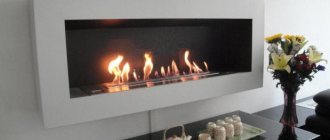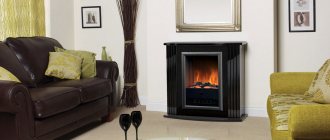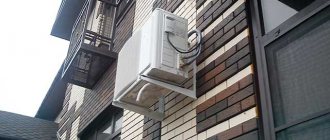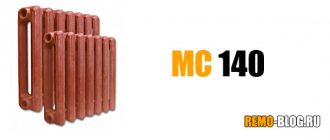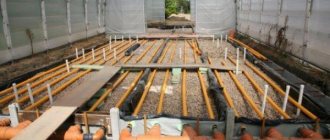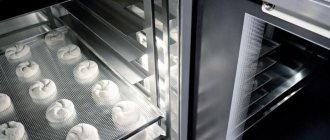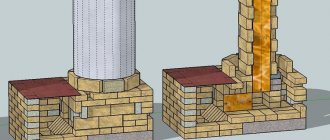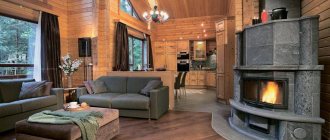Read: 134
What do many people associate with home comfort, warm evenings and a romantic atmosphere? For many, it's definitely all about having a fireplace. However, this is more an attribute of a private house, where it was initially written off in the layout of the house, like other utilities. But what if you need it in an apartment where there is neither a possible location for this, if we are talking about a traditional design, nor free space? The construction market today is ready to surprise with a variety of fireplace designs, but we are most attracted to the bio-fireplace as an excellent alternative to the classic design, which is easily suitable for furnishing apartments without the need to carry out complex repair work.
Let's figure out what types of biofireplaces there are, how they differ, and which models are considered the most practical. Let’s also not forget to look at the advantages and disadvantages of such fireplaces in order to understand who they will definitely suit and who should consider other options.
Regular fireplace or bio. Why choose the latter
A simple comparison allows us to name a number of features that emphasize the advantages of the product in question in comparison with fireplaces and other classic stove structures.
- Despite the fact that we have an open fire in the bio-fireplace, this does not lead to the generation of fumes and smoke. Therefore, when arranging the mentioned structure, there is no need to build a special chimney and ventilation system. And most importantly, there is no need for lengthy approvals before its installation with various structures (gas service, fire departments, etc.).
- The biofireplace does not require the search for firewood, coal or other solid fuel, as it uses bioethanol. During operation there is no ash or unpleasant odors, since combustion products, in this case, are H2O and CO2
- During its operation, the biofireplace produces heat. Of course, its quantity is not comparable to that which a classic fireplace can provide, but it is quite enough to warm up a small room.
- The range of biofireplace models today is very diverse, which allows it to fit organically into a bedroom or living room designed in a minimalist style. And it can look different, from an imitation of an ordinary fireplace (in appearance and dimensions), to a miniature structure, the size of which does not exceed an ordinary vase or table lamp.
- The design of a biofireplace consists of only two main elements: decor and firebox. In the latter, which plays the role of a hearth, biofuel is burned. And decorative elements not only decorate the product, but also perform protective functions, preventing foreign objects from entering the burner.
- The product in question is easy to use. Some models do not even require initial installation. You just need to buy the model you like. And in order for it to work, you just need to pour fuel into the burner available at the fireplace and light the last one. Caring for such a structure is quite simple. You just need to wipe it regularly, removing dust from the surface, and promptly remove drops of fuel and excess fuel that overflows through the filler neck when refueling it.
- Purchasing a bio-fireplace is the optimal solution for those who want to enjoy the comfort and warmth of a live fire in their own apartment, but various reasons prevent them from installing a real fireplace. A significant advantage of this product is the saving of space required for its placement and energy.
- At the owner's request, you can decorate the purchased fireplace with a variety of accessories. Models that provide for their floor placement are most often supplemented with fake “firewood,” the presence of which makes the composition brighter and more organic.
Having decided to make a purchase, you can make it yourself at the nearest retail outlet. And then you will regret the money spent, periodically encountering unpleasant surprises presented by such a seemingly simple device. To avoid this, we recommend that you pay close attention to the reputation of the trading organization where you make a purchase. It is advisable to do this in a company that has been operating in the market for a long time and has an established business reputation. For example, here.
Pros and cons of an interior item
The obvious advantage of such a fireplace is that it does not work on the principle of standard combustion and does not leave any traces behind. Therefore, it can be used in any room , even where installation of a standard device is impossible.
There is a long list of advantages of a biofireplace. They make it a unique building. These include:
- No installation or connection to the chimney is required.
- Can be installed in any room.
- There is a huge range of different shapes and sizes of fireplaces presented by manufacturers on the market. You can choose a device that fits perfectly into the interior.
- The risk of fire is reduced, if not to zero, then to a minimum. This is achieved through a unique fuel tank design.
- To install a bio-fireplace, you do not need to request permission or coordinate this issue with government authorities.
- Fairly simple installation process. All you need to do is bring it home and place it in the chosen location. Afterwards you can use it. But for large structures built into the wall, you will need the help of specialists.
- The product requires virtually no maintenance or care. It is enough just to wipe it from dust from time to time.
- Approximately 300-400 grams of fuel will be consumed per hour of non-stop operation. It depends on the size of the structure.
- Some may think that the cost of such an installation will be quite high. This is wrong. The price starts from 10 thousand rubles and even this is much cheaper than the simplest classical installation.
- Various aromatic oils can be used. Just one drop of such a substance can spread a pleasant smell throughout the entire room.
It is quite difficult to identify the disadvantages of a biofireplace. There are no obvious disadvantages that every owner of such a device will encounter. If they exist, then this is a matter of individuality of each case.
Classification of biofireplaces
All currently existing models of biofireplaces are divided according to a number of parameters. Most often these products are classified:
At the installation location
a. Floor-standing.
These models are installed on the floor, regardless of the type of flooring installed.
Since the lower part of the structure does not heat up to high temperatures, the coating, be it parquet, carpet, linoleum, etc., will not be damaged. The product consists of two basic elements: a fuel tank and the hearth itself. The fireplaces in question can have almost any shape. Various materials are used for their production: ceramics, plastic, wood and even glass. The decor can be made in any style. Such structures initially have substantial dimensions and are most often placed in the center of the room, therefore they have another name, island.
b. Tabletop.
The need to install various furniture (shelf, bedside table, table) on the surface dictates the compactness of the models under consideration and their mobility.
The burner, fuel tank and hearth are small structures. Similar products are designed in different ways. It can be a bowl, vase or geometric figure of any shape. Some models are manufactured with built-in additional safety features (for example, rollover protection). Suitable for any interior.
c. Wall-mounted.
This includes all models that are mounted on vertical surfaces.
As a rule, they have limited sizes and a minimum width (depth). The shape of the product depends only on the designer’s imagination. You can choose a model in the form of a regular cube, or you can purchase a “medieval candelabra”. Additional thermal insulation of the wall adjacent to the wall of the room is not required.
The vast majority of such models are initially equipped with various protection elements (shields or protective screens). A number of models are completely open at the top. But they are allowed to be used only where there are no flammable surfaces or objects above such a bio-fireplace. There is a special category of similar products made in the form of a painting. These versions are made of metal, which reflects heat well.
d. Built-in.
There are quite a lot of varieties of such products. They can visually represent a classic hearth, made of any materials, or they can be made flush with the wall surface.
In the latter case, the product does not have a portal. Therefore, for installation you only need to prepare a niche in any selected location on the wall (in a corner or under the ceiling, it doesn’t matter). It is possible to arrange a special box for its placement.
The market offers options that are built into the above-mentioned vertical surfaces, or into horizontal structures (classic portals or niches). Such models can be purchased with boxes that perform a dual function (a decorative element and a heat insulator). Boxes can be made in various designs: classic (only the front side is open), through (opposite sides are open) or on three sides.
Built-in bio-fireplaces can be installed with a slight extension of the structure beyond the wall surface. In such cases, the biofireplace is mounted with its end part to the wall, which allows you to observe the fire from different angles.
There are options installed in the interior wall. In such cases, a through opening is made. Then you can admire the flame in two rooms at once. The style of such a product depends solely on the wishes of the customer and the style in which the interior of the room is designed.
If possible, move them
a. Mobile.
They are compact in size and light in weight, making them easy to move.
b. Stationary.
Sufficiently sized structures. In the vast majority of cases, such models imitate classic fireplaces. Corner or wall-mounted options are available.
By type of burner installed
a. Mechanical b. Semi-automatic c. Automatic
This issue is discussed in more detail in the section devoted to the description of the designs of biofireplaces.
By design style
a. Classic.
They are made in neutral color tones and fit perfectly into simple interiors. They harmonize wonderfully with wicker or wooden furniture, stucco, natural and artificial stone, and various draperies. Such a fireplace, as a rule, is a key element of the design of the room, so it is selected in advance.
b. Minimalist.
Modern design solutions often involve minimalism. Therefore, biofireplaces made in this style fit organically into the interior of a study, bedroom, or living room. The color scheme is most often in black or gray shades. Such models do not attract the main attention. They are laconic and quite strict, so they are great for contrasts.
c. Modern.
It is assumed that glass or mirror surfaces will be used. A wonderful choice for rooms designed in the appropriate style. These designs look harmonious in combination with the original elements of room decoration and simple furniture.
d. Eclecticism.
Here we should note designs designed in modern styles, such as ethno, hi-tech, eclecticism, etc. They are usually made from innovative materials, such as plastic, fireproof glass, etc. They look ideal indoors , in which modern renovations have been carried out and the latest household appliances have been installed.
Timely advice from a qualified consultant (and we only employ competent specialists who are well versed in the topic) will allow you to choose exactly the model that is required.
Principle of operation
The fuel for biofireplaces is alcohol - bioethanol. When burned, it decomposes into water vapor and carbon dioxide, does not pollute the air, and therefore does not require connection to a chimney.
Ordinary ethyl alcohol can also be used as fuel; this does not affect the safety of the biofireplace. But when burning it gives a bluish “gas” tint, so it is better to use a special liquid that burns with a warm yellow-red fire.
Bioethanol is poured into a special stainless steel container, the volume of which depends on the specific model , and ignited using a lighter.
To give the flames a natural shape, the biofireplace burner can be equipped with nozzles. To quickly extinguish the fireplace, a lid or damper is provided to block the access of air to the fire. One fill of fuel is enough for several hours of continuous operation . Thanks to the fast ignition, the bio-fireplace can be used only at the time when it is needed, so its fuel consumption is economical, even despite the rather high cost of bioethanol. Paying attention to the reviews of the owners, you will notice that few people mention high fuel consumption among the disadvantages.
The popularity of biofireplaces is largely due to
the variety of shapes and designs, which allows them to be used in decorating any interior , from classic to high-tech. Biofuel fireplaces can be built into niches, walls or into the niche of a classic fireplace, or installed on the floor, cabinet or table in the middle of the room. In any of these places they look harmonious.
Bio fireplace design
All biofireplaces have a fairly simple design, which allows manufacturers to offer on the market a huge number of similar products with different configurations, shapes and sizes.
Let's look at the design of this product using the example of a floor-standing fireplace, which has the maximum number of elements. The main design elements are:
- The body of the product is made of glass, stone or natural wood (these two elements are typical for the designs of floor-standing fireplaces that imitate classic models). The entire structure of the biofireplace is assembled inside the body.
- The fuel block is the key element. In its simplest form, it represents a burner made of metal or artificial stone, into which special fuel is poured, made specifically for refueling bio-fireplaces. After refueling, the burner is ignited and the fireplace starts working.
- A deflector is a device that supplies hot air to a room.
- Door with glazing. The most commonly used is tempered heat-resistant glass of the OptyWhite brand, the thickness of which, depending on the fireplace model, can range from 13 to 17 mm. The glass is mounted on special mounts and, under no circumstances, is adjacent to the burner. This eliminates the accumulation of hot air and increased heating of structural elements.
- Damper for adjusting the flame height.
- Ignition system.
- Special cover for extinguishing fire (metal).
- In some models, the burner is decorated decoratively (imitation sand or stone, coal or firewood, or pebbles of various colors). In addition, other non-combustible materials can be used in finishing. All such props solve a single problem, decoration to create the appropriate mood and form a certain aesthetics of the bio-fireplace.
- Fireplace frame made of non-combustible materials (fire-resistant glass, ceramics, metal or artificial stone). This frame (fireplace mantel) is the main design element that determines the popularity of such products.
- Modern models of biofireplaces can have any shape, including futuristic ones. And the technologies implemented in them made it possible to ensure the combustion of not the biofuel itself, but its vapor.
In such designs, bioethanol is poured into a special container (capsule) and does not have direct contact with fire. At the same time, it is possible to adjust the flame power, and safe operation is ensured by a system of built-in sensors that analyze the situation in real time. They form a command to automatically turn off the fireplace when deviations from established standards are detected, which can be classified as critical. There are models of biofireplaces, the operation of which can be controlled remotely (from a phone, laptop, or tablet).
All fireplaces can be divided into two unequal parts according to the principle of combustion control. These are mechanical and automatic products. The significant difference is shown in the table below:
The operation of an automatic bio-fireplace can be controlled from a special remote control (RC). The condition of the device and its structural elements is constantly monitored by safety sensors. The built-in power lock button will prevent your child from turning on the fireplace on his own. The presence of a Wi-Fi module allows you to control the device from a computer or smartphone. Moreover, in the latter case, detailed information is displayed on the screen of these gadgets characterizing the operation of the product: the amount of heat generated, the level of combustion, fuel consumption, remaining fuel, etc. Similar information is also displayed on the fireplace display, which, if necessary, extends out of the body. You can also manage your work from there.
The combustion of ethanol vapor is controlled by the CEVB system, which makes such models more economical compared to mechanical versions.
If, when choosing the right model, the buyer has questions about its design, our employee will be happy to answer any of them.
Types of biofireplaces
If you decide to add coziness to your living room, make the interior more romantic, with a live fire at home, you cannot do without this purchase. What is a biofireplace? This is a device for heating a room, which at the same time looks original. It will become the highlight of your home decoration. True, the biofireplace does not provide strong heat - there is little practical benefit from its use. For interior design to decorate the house, various installation options can be used:
- to be fixed on the wall;
- stand on the floor;
- decorate the table;
- placed on a shelf;
- built into niches, tables.
Wall
A fireplace mounted on the wall looks great in a spacious living room. It can be large in size and perform decorative functions. Appliances that occupy an entire wall are relevant. There are models similar to TV. Here it is important to decide at what height it will look best. There are samples of wall-mounted biofireplaces for apartments, built into a niche. Interior designers offer using these devices:
- implement the principle of room zoning;
- make niches in the wall, installing through bio-fireplaces;
- decorate the ceiling by hanging the device on it.
Tabletop biofuel fireplace
For small rooms in an apartment, a tabletop fireplace will serve as a decoration. It takes up little space and can have an original shape. We are pleased with the variety of designs, colors and affordable prices. Tabletop biofireplace in the apartment:
- will play the role of a candle at a romantic dinner;
- will help you relax in the bathroom;
- will add coziness when placed on a bookshelf;
- will provide a special mood during kitchen gatherings;
- will create an intimate atmosphere in the bedroom.
- What to take with you to the sanatorium
- How to cook beef steak
- 5 authorities where to send a complaint about poor-quality medical services
Floor
The use of a floor-mounted biofireplace for an apartment is justified if the room is large. The peculiarity of the models will help you rearrange it at will in any corner of the room. There is no need for a special stand - the device does not heat up. You can use a fireplace for an apartment in different ways:
- an original cylinder-shaped model will decorate the bedroom;
- the island design will be the highlight of the dining room;
- a specimen that looks like a vase with a candle will surprise visitors to the living room;
- a flat floor option will highlight the working area of the office.
Built-in
Its appearance is very similar to a wood burning fireplace. Takes up little space in the apartment - saves space. The built-in bio-fireplace is decorated with stone, giving it a classic look. Marble and granite are used for finishing. Biofireplaces for apartments, which are finished with steel and glass, are relevant. Interior designers offer designs that form an entire wall burning with fire. Models can be embedded in:
- plasterboard niche;
- kitchen cabinet;
- furniture wall;
- through columns;
- interior partitions.
The principle of operation of a biofireplace
The body of any of the products discussed in this article houses a burner or fuel block. Special fuel, bioethanol, is poured here. The design of the burners will be discussed below. Fuel blocks are much more convenient and much more functional, but they have a more complex configuration and, therefore, are more expensive.
Carefully fill the container and set the fuel on fire. To do this, it is recommended to use special fireplace matches (long) or a fireplace lighter (included with the fireplace for floor-standing models). The possibility of overflow is minimal, since biofuel is supplied to the market in special canisters with a capacity of five liters, each of which has a consumption scale. The approximate burning time for which this volume of fuel is designed is from 18 to 20 hours.
Moreover, the burning time for each model is different. It is set by the volume of fuel poured. Practice shows that the average burning time of 2.5 liters of bioethanol can be up to 8 hours in models where it is not the fuel itself that burns, but its vapor.
If you use fuel that is made in gel form, its application is also very simple. Open the lid and place the container in a decorative pile of firewood in the firebox (you can install several cans). After which they are all set on fire.
During combustion, no harmful elements are released, there is no soot or smoke, and the fireplace does not spark. The only negative is that immediately after the fireplace starts operating, a sharp alcohol smell appears, which can be easily and quickly removed by basic ventilation.
In order to stop burning, in products with a block it is enough to simply cover the corresponding lid. In models with a burner, close the oxygen supply hole by covering it with something.
You should pay attention to the specific combustion feature inherent in the vast majority of floor-standing models. You won't be able to light them if the block isn't primed. This is explained by the design feature, which has a built-in fuel saving mechanism that does not allow using the fireplace when the fuel level is less than 10%.
Many models allow adjustment of combustion intensity. According to the mentioned characteristics, floor-standing models are divided into two types:
- With a control tank mounted in the fuel block, the average dimensions of which vary depending on the size of the model;
- With an adjustment lid designed to adjust the combustion intensity. To reduce the size, the lid is lowered and fixed in the new position. To enlarge, open it slightly. Complete closing causes the fireplace to go out.
Biofireplaces - design, types, operating tips
A biofireplace is a device that runs on biofuel: ethyl alcohol denatured alcohol, photo 1.
During combustion, alcohol releases water vapor, CO2 (carbon dioxide) and heat, but does not emit soot, soot or other harmful volatile substances. To operate, a biofireplace does not require solid fuel (wood) or a chimney.
A biofireplace is not intended for heating a room, and has a more decorative function, although it produces quite a considerable amount of heat during combustion.
How does a bio-fireplace work? What types are there? Advantages and disadvantages
Depending on the installation location, the following types of biofireplaces are produced:
- floor;
- wall;
- desktop;
- street;
- built-in;
- angular.
Depending on the mode of operation, ignition and extinguishing, biofireplaces are divided into:
- ordinary biofireplaces;
- automatic biofireplaces.
Basically, all biofireplaces have the same design, photo 1.
Let's list the main components of a biofireplace:
- body, usually metal or glass;
- fuel block;
- protective screen (usually glass);
- control panel (depending on model);
- burner.
The volume of fireboxes is as follows:
- 2 l;
- 2.5 l;
- 3.3 l;
- 3.5 l;
- 5 l;
- 9 l.
Photo 1. Biofuel (ethanol). Bio fireplace design
The fuel block is produced in two versions:
- in the form of a fuel tank;
- in the form of a small open tank with a burner.
The fuel block in the form of a tank is made of stainless steel 2 mm thick. The advantage of a biofireplace with a fuel tank is the ability to regulate the combustion intensity using a special damper; when the damper is completely closed, using a special poker you can easily put out the fire, photo 2. To fill the fuel tank, the fuel tank is removed and fuel is poured into it.
The fuel block in the form of an open container with a burner eliminates the possibility of adjusting the intensity of fuel combustion and extinguishing it. The fire is extinguished using a special container that is simply placed on the fire.
Fuel is poured into a container with a burner or into a large tank directly into the slot (slot), photo 3. It is prohibited to pour fuel into the biofireplace while it is operating, i.e. when the fuel is burning.
Photo 2. Poker for closing the damper and extinguishing the fire
Photo 3. Refueling the biofireplace
A protective screen designed to protect surrounding objects from ignition and prevent burns. The protective screen is usually made of tempered heat-resistant glass, less often of ceramics, steel or other non-flammable material.
To make your stay near the fireplace more comfortable and make it look more realistic, flavored oils of various types and scents are added to the fuel block.
Floor bio fireplaces
Floor-standing biofireplaces are fireplaces that are installed on the floor surface near the walls or in the middle of the premises of private houses and apartments, photo 4. The materials from which they are made vary: natural stone, glass, ceramics, wood, steel. Basically, metal and glass are used to make bio-fireplaces, which give the fireplace a very sophisticated, beautiful look.
Photo 4. Floor fireplaces
Wall-mounted biofireplaces
Wall-mounted biofireplaces are fireplaces that are installed on the wall of a private house (apartment), photo 5.
Photo 5. Wall-mounted biofireplaces
Wall-mounted biofireplaces are produced with a size of no more than 1 m; upon individual order, the dimensions can be increased. The depth of wall-mounted biofireplaces is small (15...25 cm), so sometimes they can be placed in a wall niche.
Tabletop biofireplaces
Tabletop biofireplaces are portable fireplaces that can be placed anywhere on a desk or small table, photo 6. Tabletop biofireplaces are made in various geometric shapes, to suit any designer’s imagination. Most wall-mounted biofireplaces are made in the following shapes:
- rectangular;
- oval;
- bowls;
- cylinder.
The fuel unit is enclosed in a metal or stone casing, the maximum dimensions of which do not exceed 50x50x20 cm (width × thickness × height).
Almost all tabletop biofireplaces are protected on two or four sides by glass walls.
It should be noted that when choosing a tabletop bio-fireplace, there is a system of protection against tipping over and spilling fuel.
Photo 6. Tabletop biofireplaces
Outdoor biofireplaces
Outdoor bio-fireplaces are fireplaces that are installed in the yard, on a green roof, etc. (photo 7). Such fireplaces are large in size and weight.
Photo 7. Outdoor bio-fireplaces
Built-in bio fireplaces
Built-in biofireplaces are installed in niches or small wall openings, which are designed before the construction of the building begins or are manufactured locally, where this is permissible, photo 8.
The depth of the niche for built-in bio-fireplaces must be at least 20 cm. In this case, before installing the bio-fireplace, a protective box is built into the niche. It is allowed to install built-in bio-fireplaces in rooms with an area of at least 20...25 m2.
Photo 8. Built-in biofireplaces
Corner bio fireplace
A corner bio-fireplace is usually installed right in the corner, at the junction of two walls, photo 9. Such a fireplace is compact and takes up minimal space. Available for both floor and wall mounting.
Photo 9. Corner bio-fireplaces
Automatic bio fireplaces
An automatic bio-fireplace differs from previous models in the presence of automation, photo 10. The automation of bio-fireplaces allows you to maximize the safety of the device and ensure comfortable operation. The automation system may include the following:
- automatic ignition;
- remote control (RC);
- manipulator;
- LED control display, which displays information about the current operation and condition of the biofireplace. In case of breakdowns or other nuances of the bio-fireplace operation, the display shows the relevant information and recommendations for eliminating them.
- control Panel;
- electronic sensors for monitoring temperature, fuel quantity, humidity, carbon dioxide content in the air;
- electronic device tilt sensor;
- combustion intensity control system;
- fireplace cooling system, which includes a built-in fan and sensors that regulate its operation;
- child lock system;
- sound or light warning system;
- remote control using a Wi-Fi system, which allows you to control the operation of the biofireplace using a mobile phone or tablet.
Photo 10 Automatic biofireplaces
Automatic bio-fireplaces are more expensive than regular ones (approximately $10,000...$15,000). Automatic biofireplaces are presented on the market by such manufacturers as Decoflame (models Denver, Orlando, Denmark), Planika Fire Line Electronic (Poland), Bioteplo (Russia).
An automatic bio-fireplace can be integrated into the Smart Home system.
Operating rules for biofireplaces
As with any device, when using bio-fireplaces, you must follow certain rules of use.
- It is prohibited to place bio-fireplaces close to flammable items, such as curtains and clothing. The distance from flammable things should be 0.4... 1 m. The distance from the window to the bio-fireplace should be at least 1.5... 2 m, Fig. 11.
Photo 11. Recommendations for the location of the bio-fireplace in the room
- It is not recommended to leave a working bio-fireplace unattended.
- When filling the fuel tank, you should carefully ensure that in the event of a fuel spill, the liquid is not left uncollected.
- Do not use the bio-fireplace in a room without ventilation.
- To ignite a bio-fireplace, you should use a special lighter with a long nozzle.
- It is recommended to pour such an amount of fuel into the fuel block so that it completely burns out during the time for which it is turned on. It is not advisable to leave fuel in the tank, since the alcohol evaporates, and it is not recommended to breathe alcohol vapor.
Let us list the main advantages of biofireplaces
- Simplicity of design and installation of equipment. Simple control of the biofireplace.
- A safe device that can be installed anywhere in the room without special approvals or permits.
- Almost all biofireplaces are mobile devices and can be carried, transported and even placed for a while on the site or terrace.
- Ethanol burns very beautifully - the flame is even, yellow-orange in color, does not smoke and has no odor.
- Relatively small dimensions of the equipment and simplicity of the fireplace design.
- Wide range of models and types of biofireplaces.
- Easy maintenance during use.
Here are some disadvantages when using a biofireplace
- Expensive to operate. Fuel is not cheap, and with intensive use it will be consumed a lot.
- During operation, the biofireplace burns oxygen and releases CO2.
- It does not replace the heating system, but can only supplement it to some extent.
- Still, the device is not completely fireproof.
- Even with a small amount of fuel remaining in the fuel block, the smell of alcohol spreads in the room due to evaporation.
When choosing a bio-fireplace, you should also take into account the volume of the fuel tank and the fact that the larger the volume of the firebox, the greater the fuel consumption. The fuel consumption of a biofireplace directly depends on the power of the fireplace, the volume of the fuel tank and the intensity of combustion and averages 0.36 l/h. For example, with a fuel tank volume of 2.5 liters completely filled with alcohol, it will be enough for 7...10 hours of continuous burning, and with intense combustion and a tank volume of more than 5 liters, the consumption will be from 1.5 liters for 3 hours of burning.
When choosing biofireplaces, you should pay attention to the following points:
- power of the device - the higher the power of the device, the brighter and more beautiful the flame;
- the presence of an electronic system for controlling the operation of the biofireplace.
PS If you still decide to use a traditional fireplace, we recommend that you read this publication.
Publication prepared by GIDproekt expert
Konev Alexander Anatolievich
Types of burners used
In modern models of biofireplaces, two types of the mentioned products are used (for floor-standing models they are structurally included in the heating unit):
- Heating tank.
A significant advantage of the mentioned unit is the absence of strong odors, which is achieved by the presence of a damper specially built into the design. The latter also excludes any other evaporation. The flame is extinguished by turning the handle (the damper closes).
The tank is completely sealed, which prevents dirt or dust from getting inside during its operation.
An additional plus is the built-in flame size adjustment.
Such devices are made from 2 - 5 mm stainless steel sheet and may have a number of specific features (depending on the model). For example:
- The tank is divided in half from the inside by a perforated partition. One is left empty, and the second is filled with mineral fiber filler;
- The tank is divided into honeycombs;
- Even more technologically complex designs.
- The burner itself
A simple design, which is a small container (dimensions can be arbitrary) for fuel. Due to its small size, several burners can be placed in one fireplace body at once (even in cases where this was not provided for in the original design).
One of the options is the simplest burner - a glass.
Significantly inferior to the first option in that:
- The flame is constantly open;
- The fireplace goes out only after the bioethanol has completely burned out;
- When special devices are used for early extinguishing, sharp unpleasant odors appear in the room;
- Flame adjustment is not possible.
Advantages and disadvantages of biofireplaces
Biofireplaces have a number of advantages :
- biofuel used in such devices does not emit harmful substances into the environment during combustion;
- the devices are easy to use, safe, their installation does not require the installation of chimneys, hoods or special ventilation systems;
- suitable for use in any premises, be it an apartment, country house, private home or office;
- easy to maintain and clean, do not get dirty like traditional fireplaces; the body and hearth only need to be wiped occasionally with a damp cloth;
- they move quite easily from one room to another, since they do not weigh very much (this does not apply to built-in models);
- The heating equipment market offers a wide range of models of different sizes, designs and types; it is not difficult to choose a product for any type of room.
Keep in mind! Biofireplaces also have disadvantages:
- at the beginning of work you may smell alcohol;
- biofuel is quite expensive, but it is not consumed very economically;
- bio-fireplaces cannot be put on a par with efficient heating devices; it is unlikely that they will be able to warm up a room efficiently.
Rules for installing a biofireplace
There are no special requirements for the placement of the fireplace. This is explained by the fact that its operation does not require a hood or a special chimney (due to the absence of harmful emissions and combustion products dangerous to humans). The only limitation is that it cannot be used in hermetically sealed areas.
The biofireplace can be installed both in residential and public places. In the latter case, a fire certificate will be required.
It is not forbidden to place a TV above the bio-fireplace. However, this requires compliance with certain rules.
- The distance between them must be at least 1000 mm.
- Both products must be placed in special niches.
The requirements for a niche for a TV are set by the current SNiP. For a biofireplace, it is made exclusively from non-flammable materials. If this is not possible, for one reason or another, it is required to provide thermal insulation. The final finishing of this niche is carried out exclusively with heat-resistant, non-combustible materials (heat-resistant glass, steel case, marble, natural granite, etc.).
One should take into account the ban on completely covering such a niche with glass, since in such a case the fireplace will be left without oxygen. If desired, a front glass screen with a height of 110 - 120 mm can be installed.
Types of biofireplaces
There are a huge number of design solutions for biological fireplaces. After all, their appearance is a unique feature, which has become one of the main reasons for the relevance of the products.
Some organizations develop individual designs for fireplaces that will fit perfectly into the client’s interior. You can use their services, but obviously it will cost more.
Floor products
There are a huge number of different outdoor fireplaces.
Some models even break the standard idea of what such a product should look like. In most cases, a floor-mounted biofireplace has visibility from all sides, so it can be installed even in the center of the room. They do not heat up to a critical level due to the features of their design and are not capable of damaging the floor covering in the house.
Tabletop models
This type of biofireplace usually looks like small vases or decorative candles with a small flame. Naturally, such a device cannot be used as a heating device. However, as a perfectly fitting element of the interior, this is exactly what you need.
You can give such a fireplace to a loved one and he will definitely be happy.
Wall Mounted
It’s hard to argue with the fact that a wall-mounted fireplace is one of the most non-standard design solutions found today.
Unlike other models discussed earlier, there are certain installation requirements:
- It is necessary to install it on the wall using a level.
- It is necessary to organize the bio-fireplace on the wall in such a way that there is not enough free space above it and there are no other wall objects. Otherwise there is a risk of fire.
In principle, these rules are relevant for any type of bio-fireplace. However, in wall-mounted options they are the most important.
Built-in devices
This option is the most difficult to install. It is necessary to plan the installation of such a structure at the stage of building a house, since a niche of a certain size is required for it.
It is unlikely that you will be able to install such a device yourself. Most likely, you will have to resort to the services of specialists who will do this quickly and efficiently.
Now there is no need to carry out complex work on installing classic fireplaces. With the help of biofireplaces you can easily improve the appearance of the room, as well as create a great place for evening gatherings.
Types of biofuels
Biofuels are commonly referred to as types of fuel that:
- made from raw materials of plant or animal origin;
- products obtained in the process of vital activity of living organisms;
- manufactured by processing waste of biological origin.
When using such fuel, chimneys are not needed. The prefix “bio” means that during the manufacturing process, exclusively plant resources belonging to the renewable group are used as raw materials.
In fact, the entire group of this product is ethanol that has undergone appropriate denaturation. Ethanol is an alcohol made using fermentation products of sugar-containing plants (wheat, beets, etc.). The second direction of its production today is the hydrolysis of feedstock containing a significant amount of cellulose (wood, straw).
Basic properties of biofuels
Ethanol, having undergone denaturation, becomes neutral to the external environment without affecting it. Therefore, it is completely harmless to humans. The combustion of ethanol produces steam, carbon monoxide and a certain amount of heat. Due to the absence of chimneys, the efficiency of the models under consideration reaches almost 95%.
Visually, the flame in a bio-fireplace is indistinguishable from the one that forms on burning wood. And the use of special brands of biofuel (gel), one of the components of which is sea salt, will provide you with the characteristic crackling of logs in the firebox.
Features of biofuels
During combustion, soot, soot and carbon monoxide are not formed. Due to the specific nature of biofuel combustion, the resulting flame does not produce the usual orange hue. To adapt it as much as possible to the type of conventional fire in a classic fireplace, special additives are added to the fuel.
Types of biofuels
Due to the increased popularity of biofireplaces, the production of fuel for them is currently established in many countries of the world, located on almost all continents.
All produced brands are currently divided into various types. The most popular are:
- biogas, which is an analogue of natural gas. Produced from garbage and waste, after their special processing;
- bioethanol It is a substitute for gasoline with a significant alcohol content;
- biodiesel. Made from vegetable oils.
What to look for when choosing biofuel
The color of the fire in your fireplace and its saturation depend on the choice. Basic requirements that fuel must meet:
- must burn without residue;
- have significant heat output;
- quality must be confirmed by the availability of certificates from relevant research institutes.
Advantages and disadvantages of biofuels
The undoubted advantages of biofuels include:
- environmental cleanliness;
- absence of harmful secretions;
- the intensity of its combustion can be changed;
- no installation of chimneys or other equipment is required;
- simplicity and ease of maintenance;
- high fire safety;
- ease of transportation;
- high heat transfer efficiency;
- there is no need to prepare fuel and allocate space for its storage;
- humidifying the air in the room during the combustion process;
- complete exclusion of flame return;
- relative cheapness.
Minuses
- It is prohibited to add biofuel if the fireplace is working. It is imperative to extinguish it and wait for the burner to cool completely;
- It is prohibited to install such fireplaces in close proximity to sources of open combustion;
- Biofireplaces can only be lit with special lighters or fireplace matches.
Biofuel in a biofireplace
It’s not difficult to understand how a biofireplace works, but what is fuel with the prefix “bio”? Eco-friendly fireplaces were born thanks to the discovery of bioethanol. Despite such a loud name, the substance is familiar: it is industrial alcohol, which is obtained from legumes, grain crops, potatoes, sugar cane or beets.
Fuel advantage
A fireplace fueled by bioethanol promises:
- absence of unpleasant odor, soot, soot;
- light aroma due to the use of special additives;
- no burning splashes or flying sparks;
- economical fuel consumption.
The process of producing ethanol, technical alcohol includes 3 stages. This:
- preliminary preparation of raw materials - grinding;
- then - fermentation using yeast;
- its filtration is the removal of solid biomass from a liquid.
The result is weak ethanol (15%), which is then distilled and concentrated. Additives are added to the resulting ethanol after these operations, turning a simple product into a biological one - bioethanol. Alcohols obtained from organic raw materials (bioethanol, biobutanol, biomethanol), as well as dimethyl ether, are biological and environmentally friendly fuels. When burned, such products release only a small amount of carbon dioxide and distilled water vapor.
Product percentage composition
Colorless and flammable fuel consists of 95% ethyl alcohol. The percentage of other additives looks like this:
- water - 4%;
- bitrex (denatonium benzoate) - 0.01%;
- methyl ethyl ketone (solvent) - 0.5%;
- additives for odor and color - 0.5%.
In its pure form, this alcohol is completely odorless, but some manufacturers add fragrances to its composition. Burning fuel may smell like birch wood, coffee, rosemary, pine needles, etc. Flavored fuel also requires good ventilation.
Other possible (used) additives are sea salt, due to which a crackling sound appears during the combustion process, like real firewood, and special additives that give the flames an orange color.
conclusions
Despite the apparent simplicity of the design and operation of a biofireplace, they can present a lot of unpleasant surprises to the uninitiated.
You can avoid them by purchasing a fireplace and biofuel for it in specialized stores, for example, from us. Having worked in this market segment for quite a long time, our specialists can tell you almost everything about the features of any fireplace brand.
The consultant will carefully listen to all your wishes, clarify where you plan to install the fireplace, in what mode to operate it, and offer a choice of several models that best meet the buyer’s needs.
We offer products from the world's leading brands, which guarantees you the quality of the product and a long period of use.
Rating of the TOP 10 best biofireplaces
For your information! There are many biofireplaces from different manufacturers. They vary in size, installation type and functionality.
Let's consider the most popular models on the domestic market in terms of price and quality.
"Russian fire Avangard 1200N"
Thanks to the details thought out to the smallest detail, the Russian Fire Avangard 1200N bio-fireplace is absolutely safe; it does not emit burning, soot or other harmful substances.
The unit has the ability to regulate the flame level; its fuel block is equipped with ceramic fiber that absorbs fuel and prevents it from spreading.
This solution increases the safety of the biofireplace. The device is intended for hanging on the wall.
Its installation and operation do not require special knowledge and skills. The kit includes detailed instructions for installing and using the fireplace.
Key parameters:
- version - wall-mounted/built-in;
- fuel tank volume - 3 l;
- length of the firing line - 75 cm;
- case material - steel;
- dimensions (WxHxD) - 120x14x5 cm;
- weight - 15 kg.
Advantages
- there is no smoke, soot, the unit itself and nearby surfaces are not polluted;
- stylish design;
- ease of use;
- optimal fuel consumption;
- the cost is lower than that of imported analogues.
Flaws
- There is no glass included, you need to buy it separately;
- expensive biofuels;
- quite heavy.
"Russian Fire Loft 900V"
The main criteria for the Russian Fire Loft 900V biofireplace are safety, environmental friendliness, efficiency and high quality at an affordable price.
The biofireplace is made of powerful and thick sheet metal.
The unit is equipped with a flame level adjustment system; the burning time on one refill reaches 6 hours.
The kit includes a fuel funnel and operating instructions; optional installation of protective glass is provided, which is purchased separately.
Key parameters:
- version - wall-mounted/built-in;
- fuel tank volume - 2.5 l;
- length of the firing line - 50 cm;
- case material - steel;
- dimensions (WxHxD) - 90x40x14 cm;
- weight - 9 kg.
Advantages
- compactness and light weight;
- liquid spill protection;
- reasonable cost;
- good quality of materials and workmanship;
- large burner size.
Flaws
- no protective glass;
- The instructions for use are not very detailed.
Kratki Whiskey
The Whiskey biofireplace from the Polish manufacturer Kratki is a reliable steel structure combined with an elegant design in a classic style.
The compact device is perfect for installation in small houses and apartments.
The elements of the device are covered with heat-resistant powder coating.
The basic configuration includes protective tempered glass, which increases operational safety.
The glass is located above the burner for a more comfortable pouring of biofuel into the biocontainer of the Mini line. The kit includes a flame level adjustment knob.
Key parameters:
- version - floor-standing;
- fuel tank volume - 0.4 l;
- length of the firing line - 14 cm;
- case material - steel;
- fuel block material - stainless steel;
- dimensions (WxHxD) - 73x75x19 cm;
- weight - 15 kg.
Advantages
- comes assembled and can be immediately installed in the planned location;
- does not require connection to the chimney, saving time and money;
- design in a classic style, looks good in any interior.
Flaws
- burning time on one refill is only 3 hours;
- manual control.
Kratki Galina
The Kratki Galina biofireplace can be installed anywhere; it is ideal for both large residential and office spaces, as well as small spaces.
This is a compact model made of powder coated steel.
The fuel container is covered with glass at the front and back. The fire intensity is adjusted using a special metal handle.
Does not require connection to the chimney. The kit includes detailed operating instructions.
Key parameters:
- execution option - floor/table;
- fuel tank volume - 0.4 l;
- length of the firing line - 13 cm;
- body material - combined;
- additional options - protective glass;
- dimensions (WxHxD) - 35x22x18 cm;
- weight - 3.8 kg.
Advantages
- beautiful design, goes well with classic furniture;
- even upon first use there is no smell;
- there is a flame adjustment;
- safe to use;
- easy.
Flaws
- the price from Russian retailers is too high (when compared with the price in the official online store);
- It would not be superfluous to have a piezo lighter in the kit.
Kratki Delta
The simple, compact Kratki Delta model is the optimal solution for people who do not have the opportunity to install a traditional fireplace in their home.
Installation of this model is carried out in two ways - by hanging directly on the wall using holes located in the rear wall, and by installing it in a decorative box.
The biofireplace is very compact and takes up a small amount of space. The device uses a biocontainer from the Mini line.
Key parameters:
- version - wall-mounted/built-in;
- fuel tank volume - 0.4 l;
- length of the firing line - 40 cm;
- case material - metal;
- burner material - stainless steel;
- additional options - protective glass;
- fireplace dimensions (WxHxD) - 40x60x14 cm;
- weight - 6.8 kg.
Advantages
- compactness;
- there is protective glass;
- versatility and ease of installation;
- small weight of the product;
- quality materials and workmanship.
Flaws
- no remote control;
- high price;
- short operating time on one gas station.
Zefire Standard 1100 end
The compact bio-fireplace for through installation Zefire Standart 1100 can become a real decoration of the interior and create a special atmosphere of harmony and comfort in the house.
Thanks to the technologies used in the manufacture of this product, its installation can be carried out in any room, including private city apartments and public places.
The body and firebox of the bio-fireplace are made of high-quality stainless steel, coated with fire-resistant powder paint.
Key parameters:
- version - built-in;
- fuel tank volume - 4.7 l;
- length of the firing line - 80 cm;
- body and fuel tank material: stainless steel;
- additional options - tempered glass;
- dimensions (WxHxD) - 11x47x24 cm;
- weight - 8 kg.
Advantages
- high quality of assembly and materials;
- large volume of fuel block;
- efficiency;
- high level of security;
- compactness;
- reliability in operation.
Flaws
- heavy for its small dimensions;
- slight odor upon first ignition;
- the price is high.
Kratki Golf
The body and firebox of the wall-mounted/built-in Kratki Golf model are made of stainless steel, which guarantees uniform heating and safety; the bio-fireplace itself is quite wide, which gives the stunning effect of a real hearth.
The device body is made entirely of steel, the structural elements are coated with powder paint with high heat resistance and resistance to mechanical damage.
Innovative developments used in the manufacture of the fuel container guarantee safe operation and ensure uniform combustion of the liquid.
Key parameters:
- version - wall-mounted/built-in;
- fuel tank volume - 0.4 l;
- length of the firing line - 15 cm;
- case material - stainless steel;
- fireplace dimensions (WxHxD) - 66x37x15 cm;
- weight - 9 kg.
Advantages
- bio-fireplace fits perfectly into any interior;
- the walls are made of thick metal;
- small dimensions;
- possibility of installation in a niche;
- acceptable price.
Flaws
- high cost of biofuels;
- heavy weight of the fireplace;
- small fuel tank volume.
Kratki Whiskey 2
The Kratki Whiskey 2 biofireplace is already equipped with protective tempered glass as standard, which increases the safety of its use in homes and apartments.
The model is made entirely of steel, with heat-resistant powder coating applied to all elements.
This is a fairly large device, so it is more suitable for spacious rooms.
The equipment is delivered fully assembled and can be immediately installed at the planned location. The Whiskey 2 model uses a container from the Petit line.
Key parameters:
- version - floor-standing;
- fuel tank volume - 1.2 l;
- length of the firing line - 25 cm;
- case material - steel;
- additional options - tempered glass;
- dimensions (WxHxD) - 103x88x25 cm;
- weight - 24 kg.
Advantages
- a perfect imitation of a traditional fireplace with an open fire in the English style;
- high resistance to mechanical damage;
- safety of use;
- uniform fluid flow;
- tempered glass separating the firebox from the room.
Flaws
- very heavy;
- high price;
- lack of remote control, piezo lighter.
Kratki Echo
The design of the fuel container of the Kratki Echo biofireplace is rational and thought out in all respects, and a wide range of body colors allows you to realize the most original interior design ideas.
The device is equipped with an additional compartment that prevents biofuel from spilling when pouring liquid.
The body of the floor-standing fireplace is made of steel and visually represents two ellipsoids connected to each other by a rectangular container base.
The fuel block is designed in a special way, eliminating the risk of alcohol filler leakage.
Key parameters:
- version - floor-standing;
- fuel tank volume - 0.4 l;
- length of the firing line - 15 cm;
- case material - steel;
- dimensions (WxHxD) - 50x29x16 cm;
- weight - 7.8 kg.
Advantages
- original design;
- ease of installation;
- comfort of use;
- high level of security;
- quality materials and workmanship.
Flaws
- performs essentially only decorative functions;
- requires a separate dedicated space for installation;
- small volume of fuel container.
Zefire Orion 900
The Zefire Orion 900 wall-mounted biofireplace will be the best interior decoration and will create a special atmosphere of harmony and comfort in the room.
The model is distinguished by ease of assembly and installation, stylish design, absence of smoke, burning and soot.
The design elements are thought out in a special way, ensuring the maximum level of fire safety.
The body of the product is coated with fire-resistant powder enamel and is additionally equipped with tempered glass.
Key parameters:
- version - wall-mounted;
- fuel tank volume - 2.5 l;
- length of the firing line - 40 cm;
- case material - steel, glass;
- fuel tank material - stainless steel;
- dimensions (H×W×D) - 40×90×13 cm;
- weight - 16 kg.
Advantages
- reliable steel body;
- high degree of security;
- glass included;
- spacious fuel block;
- affordable cost of equipment.
Flaws
- manual control;
- heavy weight.
Final Thoughts and Suggestions
Every fireplace and fireplace placement will be different, and not every placement will be as simple as the steps listed above. Certain models or projects are more difficult and certain tasks will require professional input. If you are ever unsure about these steps, call a professional and don't risk the potential danger and hassle that could result later due to improper installation. Each bio fireplace comes with its own installation instructions to ensure you install it correctly, please try to follow the manufacturers recommendations.
